This story is part of the GP100, Gear Patrol’s annual index of the 100 best products of the year. To see the full list of products or read this story in print, check out Gear Patrol Magazine: Issue Eight, available now at the Gear Patrol Store.
For much of the history of the wristwatch, it was possible to measure progress in decades. This year, however, we saw some truly game-changing timepieces. Some, like Ressence’s e-Crown Concept, were technologically ground-breaking while others simply made inroads with respect to design and value — such as the Baume & Mercier Clifton Baumatic and Tudor Black Bay 58. Altogether, these watches are a refreshing testament to the fact that there are brands committed to pushing the envelope.
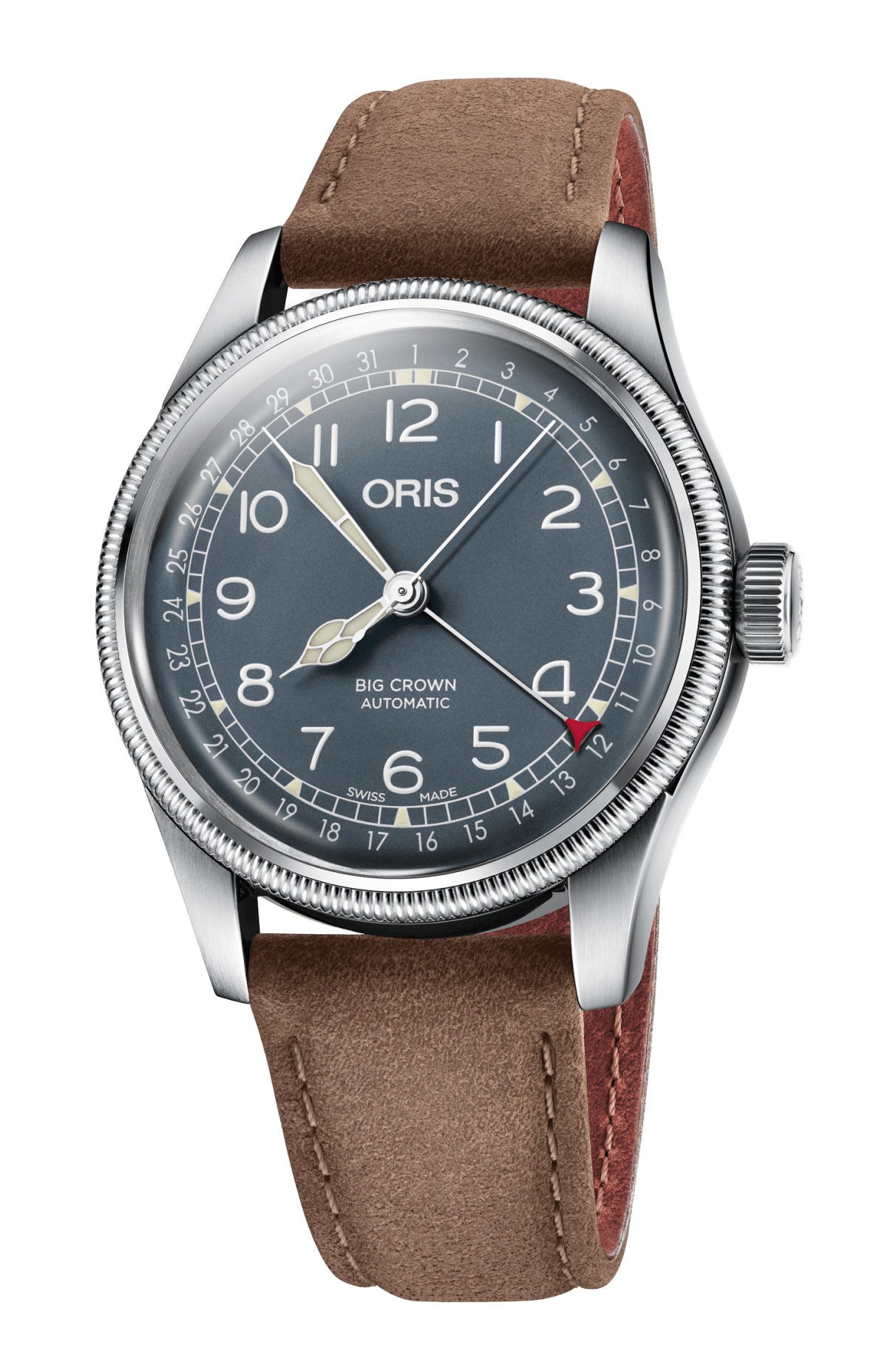 Oris
OrisOris Big Crown Pointer Date
Oris’s Big Crown Pointer Date has been a great timepiece for over 70 years, but a few smart 2018 updates offer buyers more choices than ever before. Its pastel-like dials stand out in an industry still riffing on monochromatic palettes, and options in case size (either 40mm or 36mm) make it approachable for men and women turned off by oversized watches. All of this, alongside its relatively low price, makes it a truly great value. — Andrew Connor
- Case Diameter: 36mm or 40mm
- Winding: Automatic
- Power Reserve: 38 hours
Baume & Mercier Clifton Baumatic
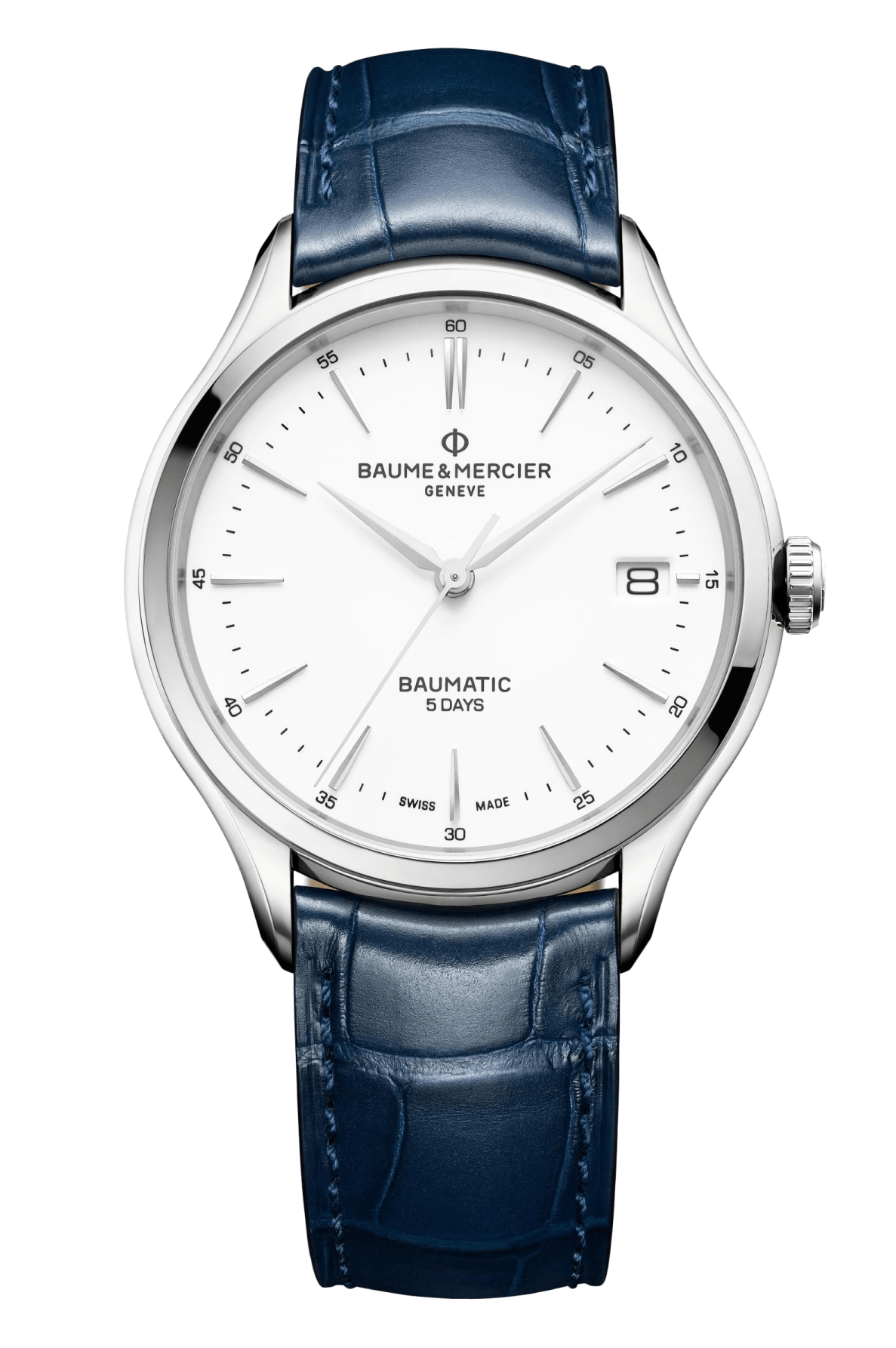 Baume & Mercier
Baume & MercierUntil this year, the Richemont Group, one of the world’s most powerful watchmaking conglomerates, did not offer an affordable watch that featured silicon, a material known to increase a watch movement’s accuracy. The Baume & Mercier Clifton Baumatic remedied that situation with flying colors, and also included a five-day power reserve. With a sub-$3,000 MSRP, it represents some serious value for money and hopefully a glimpse of things to come at Richemont. — AC
- Case Diameter: 40mm
- Winding: Automatic
- Power Reserve: 120 hours
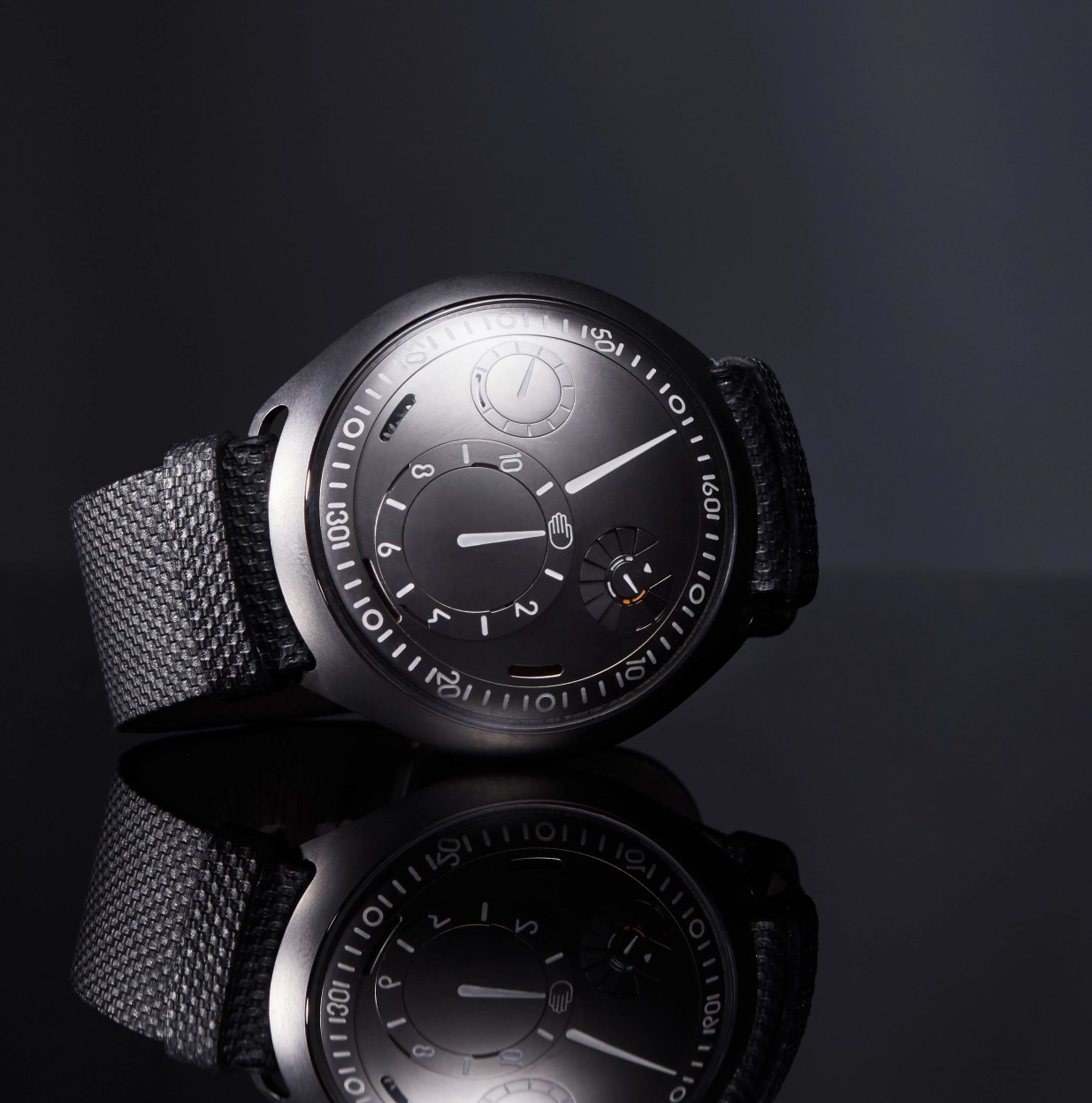 Chandler Bondurant
Chandler BondurantRessence e-Crown Concept
Ressence is a brand built on the idea that you can embrace mechanical watchmaking and simultaneously buck tradition. The company’s method of displaying time on a dial made up of mechanically-driven orbiting discs was already ahead of its time when the brand was founded in 2010, but what Ressence showed off at the 2018 Salon International de la Haute Horlogerie (SIHH) — one of the watch world’s biggest shows — was both unprecedented and unexpected.

In short, Ressence’s e-Crown concept introduced the possibility of a cybernetic timepiece of sorts, one that runs and functions on mechanical power but is augmented with electronic components. Like all other Ressence watches, the e-Crown Concept has a standard mechanical movement, but it also utilizes Ressence’s 87-component electro-mechanical module. This module allows the timepiece to reset itself to the correct time if it hasn’t been running for a while.
Ressence is a brand built on the idea that you can embrace mechanical watchmaking and simultaneously buck tradition.
This module doesn’t rely on outside time signals, either, like some quartz watches equipped with GPS or atomic timekeeping. You set the watch as you normally would, then the module uses this as a reference and monitors its own performance and activity to self-regulate. If you haven’t been wearing the e-Crown and it’s been sitting unwound, you simply pick it up, tap the crystal and it’ll adjust to the right time. The watch can also connect to your phone via Bluetooth, which means it can feed off your smartphone’s clock to adjust time zones when traveling.
What’s more, this system doesn’t rely on a battery that needs to be replaced or plugged in for charging. It uses so little energy that it can be sufficiently charged by discreet solar panels exposed by shutters that open automatically in the dial. The radical design language notwithstanding, there’s almost no reason to believe this Ressence is anything other than a mechanical watch. And though the project remains a concept for now, Ressence has stated intentions to bring it into production in January of 2019.
The genius of the e-Crown concept is not simply that it marries electronic and mechanical elements into a single watch, but that it does so simply to improve the actual mechanical timekeeping and not to add some secondary and superfluous function. In this sense, this is one of the few instances in which one can truly observe the historical art of mechanical watchmaking evolve. — AC
- Case Diameter: 45mm
- Winding: Automatic
- Case Material: Titanium
Montblanc Geosphere 1858
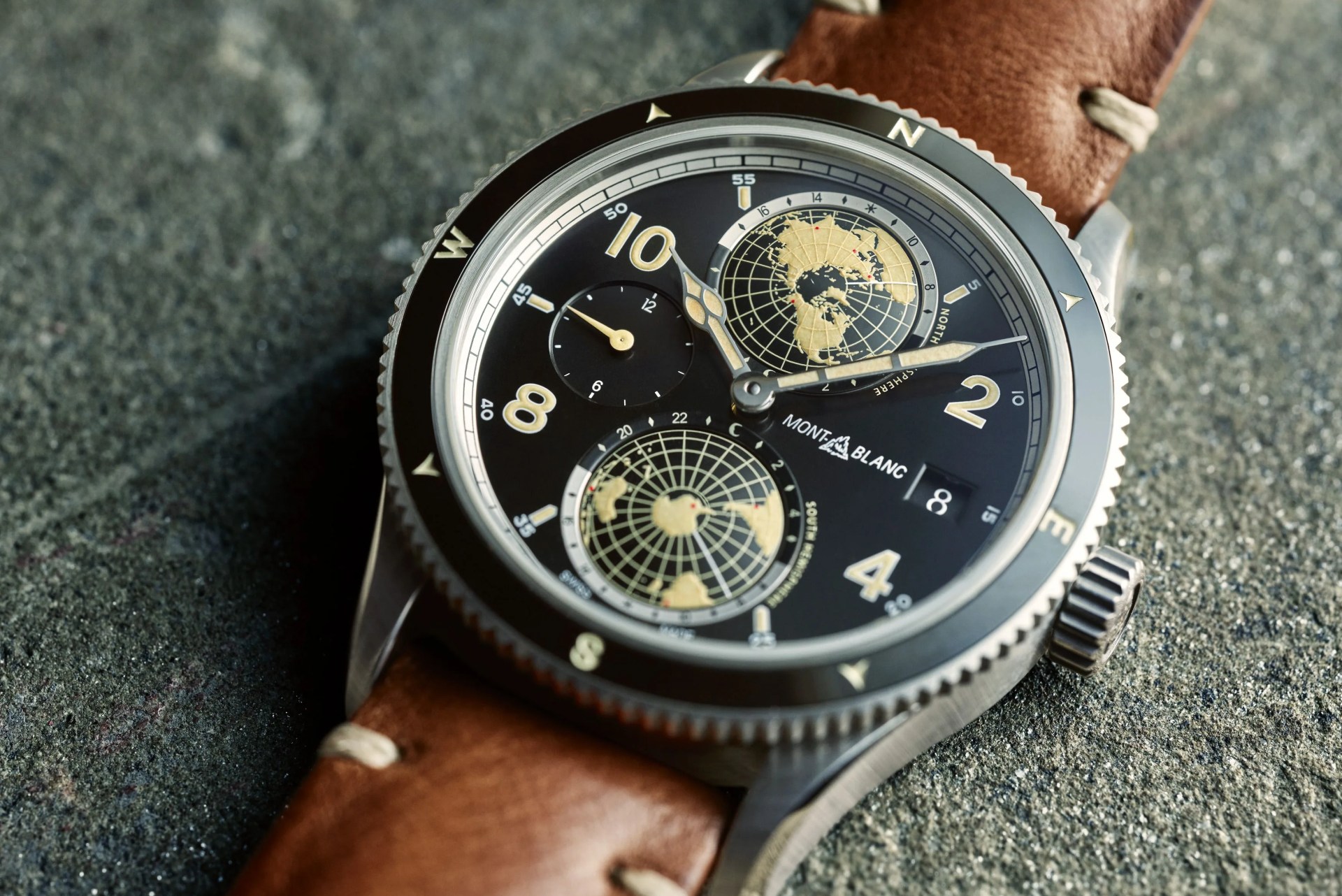 Montblanc
MontblancWorld timers, which show the time in multiple cities, aren’t particularly common — and when they’re used, it’s often for exorbitantly expensive pieces whose designs lean classic. Montblanc’s 1858 Geosphere changed that this year by offering the complication in a unique configuration — shown on two hemisphere displays — for a comparatively reasonable $5,600. The handsome design looks almost like a dive watch, making it significantly more wearable than pricier alternatives. — AC
- Case Diameter: 42mm
- Power Reserve: 42 Hours
- Winding: Automatic
Hamilton Khaki Field Mechanical
 Hamilton
HamiltonHamilton drew on its long history crafting tool watches for the U.S. military in designing the Khaki Field Mechanical, a hand-wound piece with a matte stainless steel case that clocks in at a perfect 38mm wide by 9.5mm tall. A simple time-only watch with luminescent hands and indices that ships on a Nato strap, the Khaki Field Mechanical is the essence of the military watch: simple, reliable and tough as nails. — Oren Hartov
- Case Diameter: 38mm
- Power Reserve: 46 hours
- Winding: Manual
 Gear Patrol
Gear PatrolRolex GMT-Master II 126710BLRO
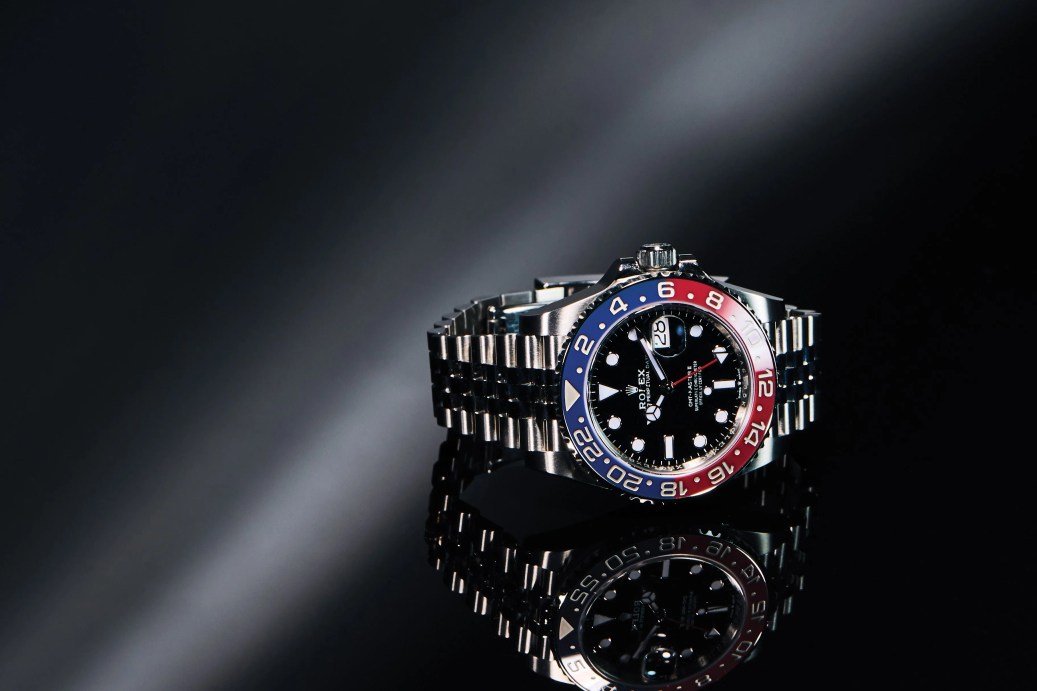 Henry Phillips
Henry PhillipsAs far as popular watches go, a Rolex has become the ultimate status symbol. But the debate over which particular Rolex model is the crème-de-la-crème rages on. Generally, it boils down to the “big three”: the iconic Submariner dive watch; the sexy Cosmograph Daytona chronograph; and the ultimate traveler’s companion, the GMT Master.
If you’re going to bat for the last of this trio — and many watch lovers do — there’s little doubt as to which version you’re picking: it’s nicknamed the “Pepsi,” and it’s the legend of the Rolex world. If you don’t know watches, you might snicker at the soft drink-inspired association, but there’s something deeper going on here. Which is why, when Rolex announced a new Pepsi-bezel GMT Master II in Oystersteel (their proprietary blend of stainless steel) at this year’s Baselworld, people freaked out.
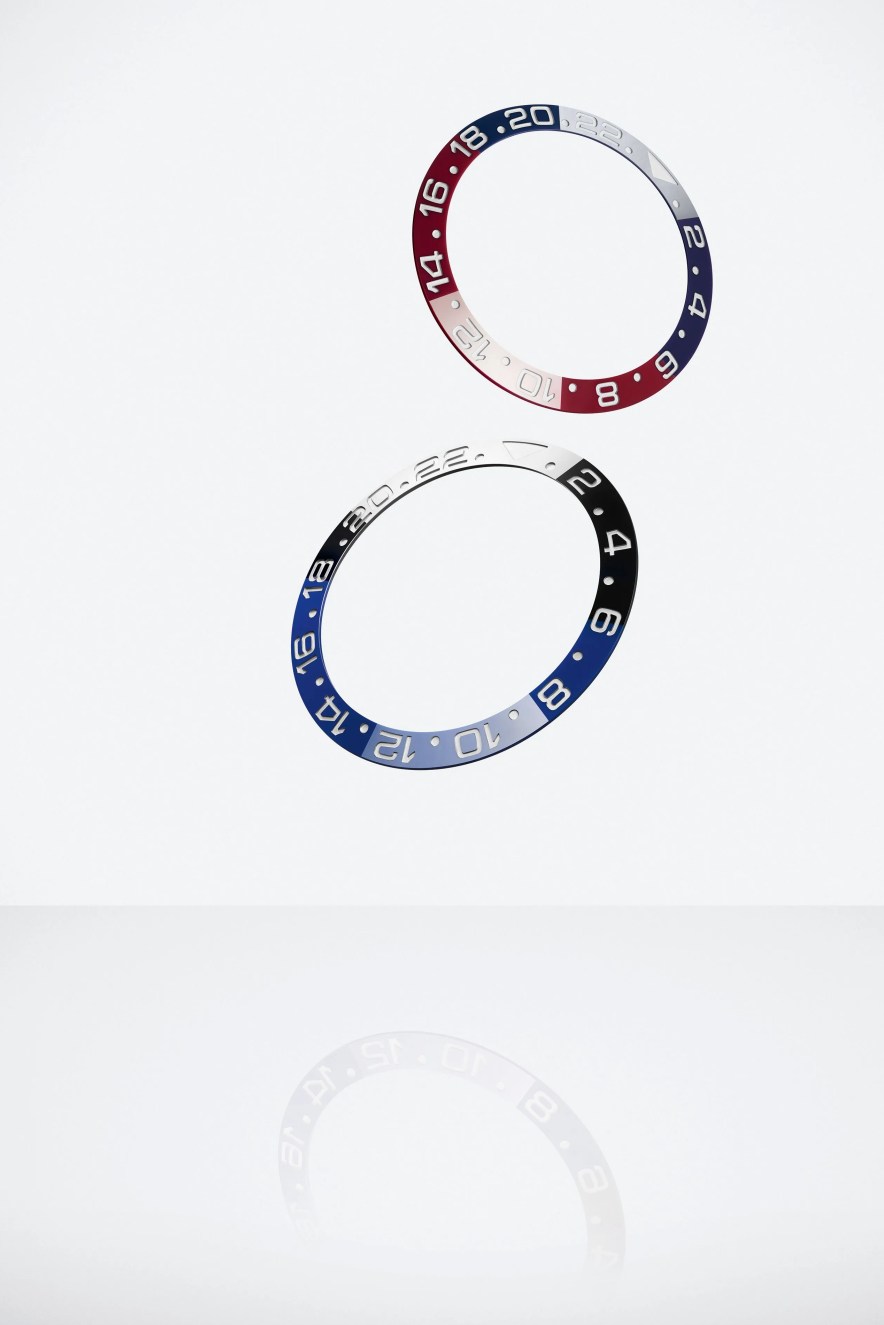
It’s useful to note that Rolex is one of the best companies in the world at what it does, which is, first and foremost, building a luxury brand. Rolex’s representatives declined to provide comment for this story, and in fact, they decline to be interviewed for almost every story written about them, because it is their official policy not to give interviews. And why should they? It’s better for them this way. This is a company that’s batting a thousand on watch designs, and whose dominance of the competitive world of high-end watches is unquestionable. They are steeped in legend and myth, and if they spoke freely, those legends and myths would dissipate. (There’s even a rumor that they are owned by the Vatican, which is, of course, absolute bunk… we think.)
So we begin, as many Rolex stories do, with a story that has since become horological legend. In the early 1950s, Pan American Airlines needed someone to make a watch for their pilots, and they hired Rolex, which produced the first GMT Master, reference 6542, in 1954. The 6542 included a rotating 24-hour bezel which, when used in conjunction with the watch’s fourth hand, the 24-hour indicator, allowed the user to read the time in a second time zone.
In order to tell the difference between day and night on the 24-hour bezel, Rolex colored its bottom half red and its top half blue. Then, at some point, someone decided to start calling the watch the Pepsi, because its blue-and-red color scheme resembled the soda’s logo, and this person established a powerful precedent.
“One of the first Rolexes with a nickname was the GMT.”
“Almost every Rolex today has a nickname,” says Steve Kivel, who runs Grand Central Watch, a certified Rolex repair shop in New York’s Grand Central Station. “But one of the first Rolexes with a nickname was the GMT.” The nicknames themselves are notable for vacillating between superheroes, sodas and various badasses. To wit: the “Coke” (GMT Master II in black and red), the “Root Beer” (GMT Master II in brown and gold), the “Batman” (GMT Master II in blue and black), the “Kermit” (Submariner with black dial and green bezel), the “Hulk” (a larger Submariner with green bezel and dial), the “Great White” (Sea Dweller with white text), the “Smurf” (a Submariner in all blue and white), the “President” (gold day-date worn by Churchill, Eisenhower and others), the “James Bond” (Submariner 6538, famously worn on a NATO strap that didn’t fit correctly), and the “Paul Newman” (Daytona worn by… Paul Newman). Another legend with little actual evidence: a white-dial GMT Master supposedly made for Pan Am executives in the late 1950s.
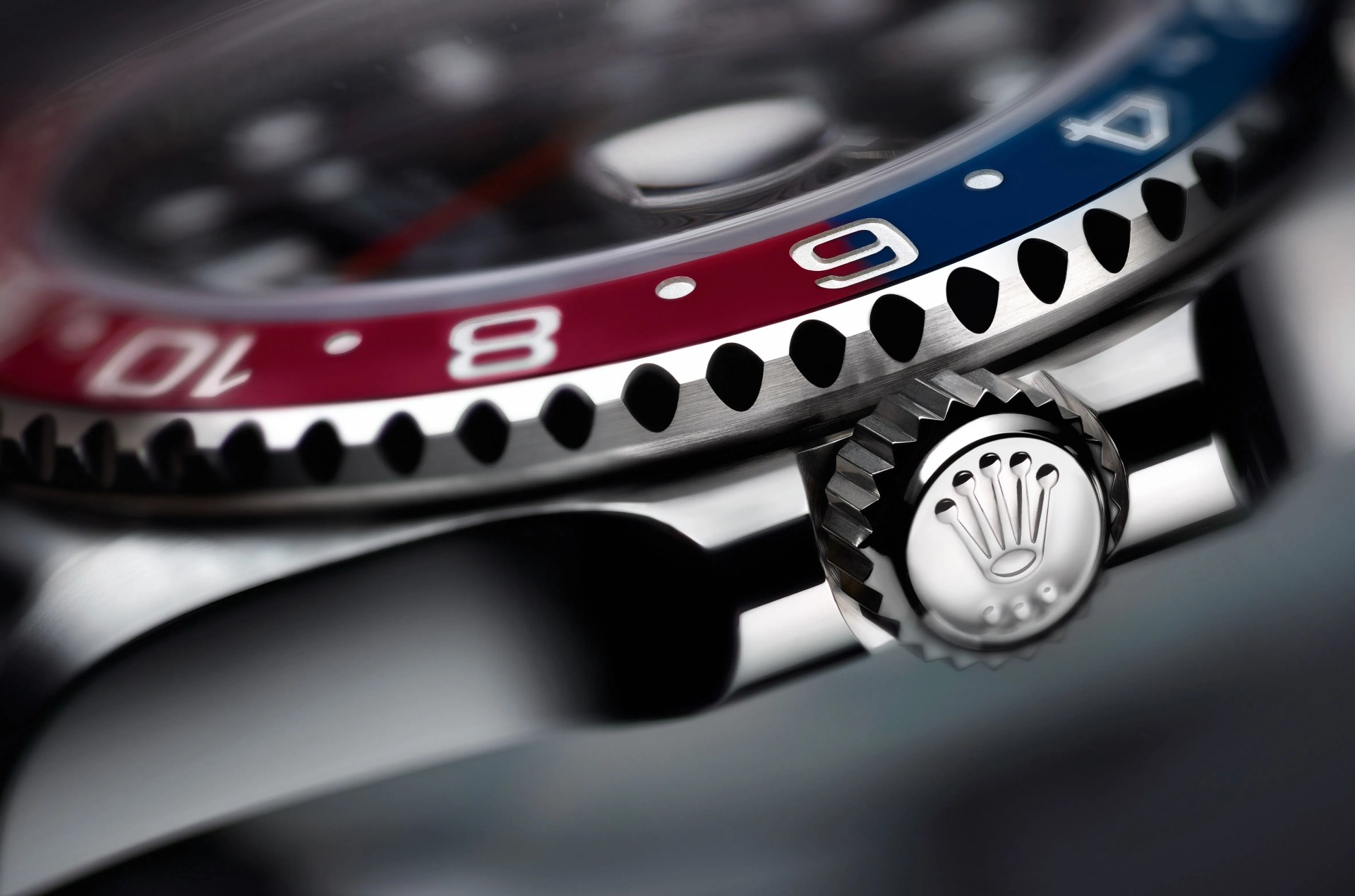 Rolex/Alain Costa
Rolex/Alain CostaThat famous Pepsi bezel was quickly upgraded from Bakelite (it cracked) to aluminum in 1956. In 1959, the company added a new movement, the caliber 1565, and dubbed this reference the 1675. And this is the way the GMT Master stayed all the way until 1980, making the 1675 the longest-running Rolex reference (though it received several small tweaks during this time). Che Guevara is believed to have been wearing one when he was captured and executed in Bolivia. Pablo Picasso wore one, and so did many very cool American astronauts (most likely because they had been pilots before becoming space cowboys). There were other bezel color schemes along the way, but the Pepsi remained choice. All of this iconic wearing had a simple result: the Pepsi became known for being cool as hell.
Che Guevara is believed to have been wearing one when he was captured and executed in Bolivia.
The modern era of the watch began in the ’80s with the first discontinuation of the Pepsi bezel; the GMT Master II was produced between 1984 and 1989 in red and black. This color monopoly didn’t last, and the Pepsi scheme reappeared again on the GMT Master II in 1989. Then, in 2007, Rolex once again discontinued the colorway, the official reason being that the new bezel material, ceramic, made the two-tone blue-and-red colorway impossible to manufacture.
The company did release a version (the Rolex GMT Master II SARU) that used rubies and sapphires in place of the red and blue on the bezel — Sylvester Stallone bought one, but they weren’t for everyone. Then, in 2013, Rolex released the two-tone blue-and-black Batman colorway, but the public was clamoring for a return to Pepsi.
“People were yearning for them, badly,” says Paul Aliteri of Bob’s Watches. “And then they did bring it back in 2014 — but in white gold. Everyone kind of said, ‘Awwwwww. Thirty-eight thousand dollars is a lot of money.’ Ever since then, the Rolex world has been waiting for it to come back.”
Hence the audible gasps from the watch world when Rolex released the Rolex GMT Master II 126710 BLRO Pepsi Bezel in Oystersteel at the 2018 Baselworld trade show. “Here it was at long last,” wrote Jack Forster for Hodinkee. “The Pepsi GMT in its purest form, in steel, as God and Hans Wilsdorf (the founder of Rolex) intended.” (Cool but less notable were the other two new versions, in Everose gold and Everose gold and steel — they were simply not red and blue enough for most.)
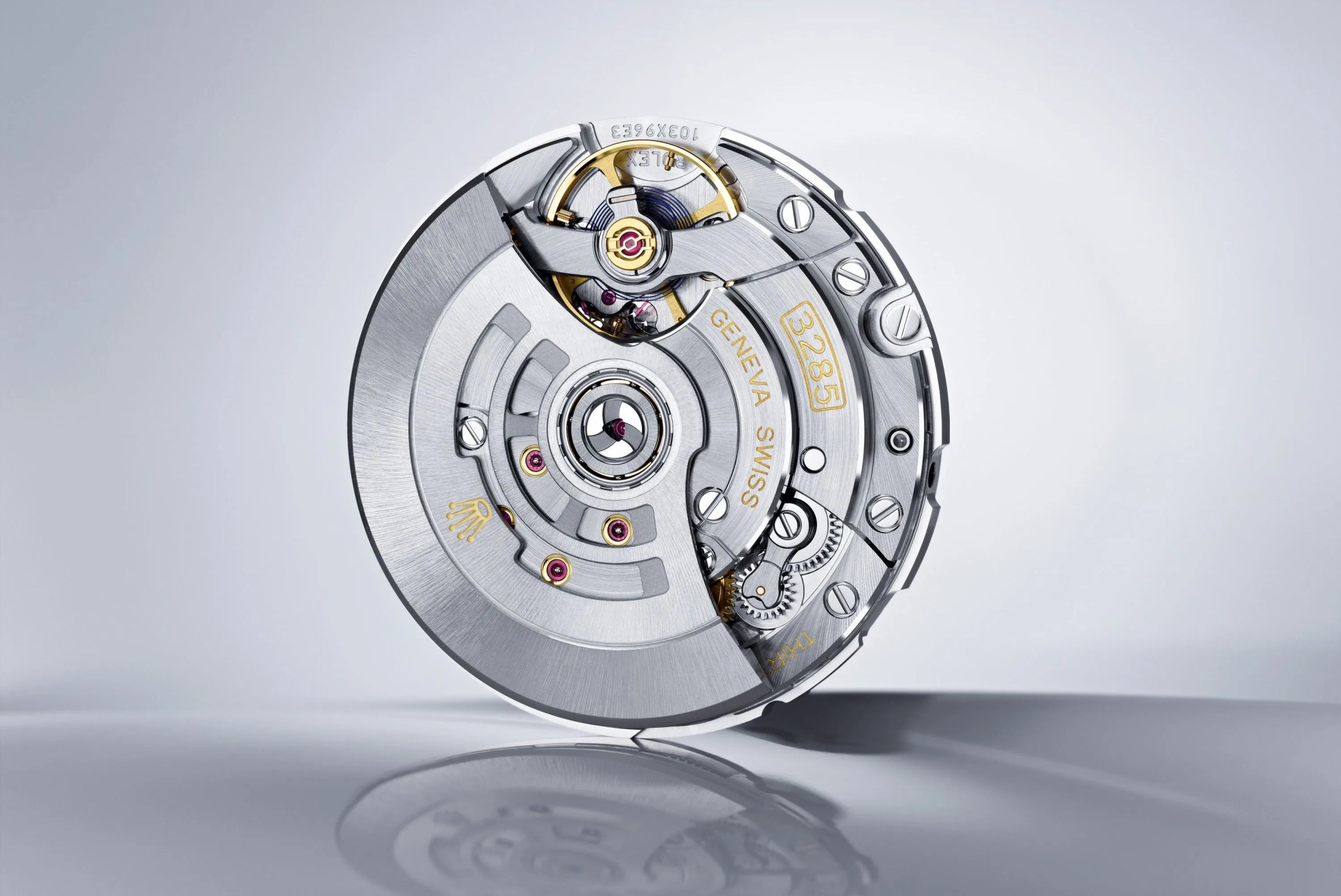
The watch had a new movement — the caliber 3285, a few seconds more accurate per day — and a new bracelet — the five-piece link Jubilee — which was met with as much division as ever occurs among Rolex fans. It had the same old Pepsi bezel, and it promptly sold out. Rolex does not release specific data about its watch sales, though it’s said that the overall number of watches manufactured per year is about 800,000. In any case, people clamored to get at the red-and-blue, but very few did. “With Nike, Apple, Tesla, if they misestimate demand, and don’t have enough, it’s no problem,” Aliteri says. “Go and turn the presses on, make more! They’re not gonna turn down customers. Rolex won’t do that. They say, ‘That’s it. That’s all we make.'”
The wait list for the new Pepsi bezel in steel stretches several years, and the watch, which retails for $9,250, is now selling on the secondary market for as much as $22,000. The most the Batman — almost exactly the same watch, albeit in a different color scheme — ever went for at Aliteri’s store was half of that, which seems to prove one thing:
It’s good to have legends, particularly in red and blue. — Chris Wright
- Case Diameter: 40 mm
- Winding: Automatic
- Power Reserve: 70 hours
A. Lange & Söhne Triple Split
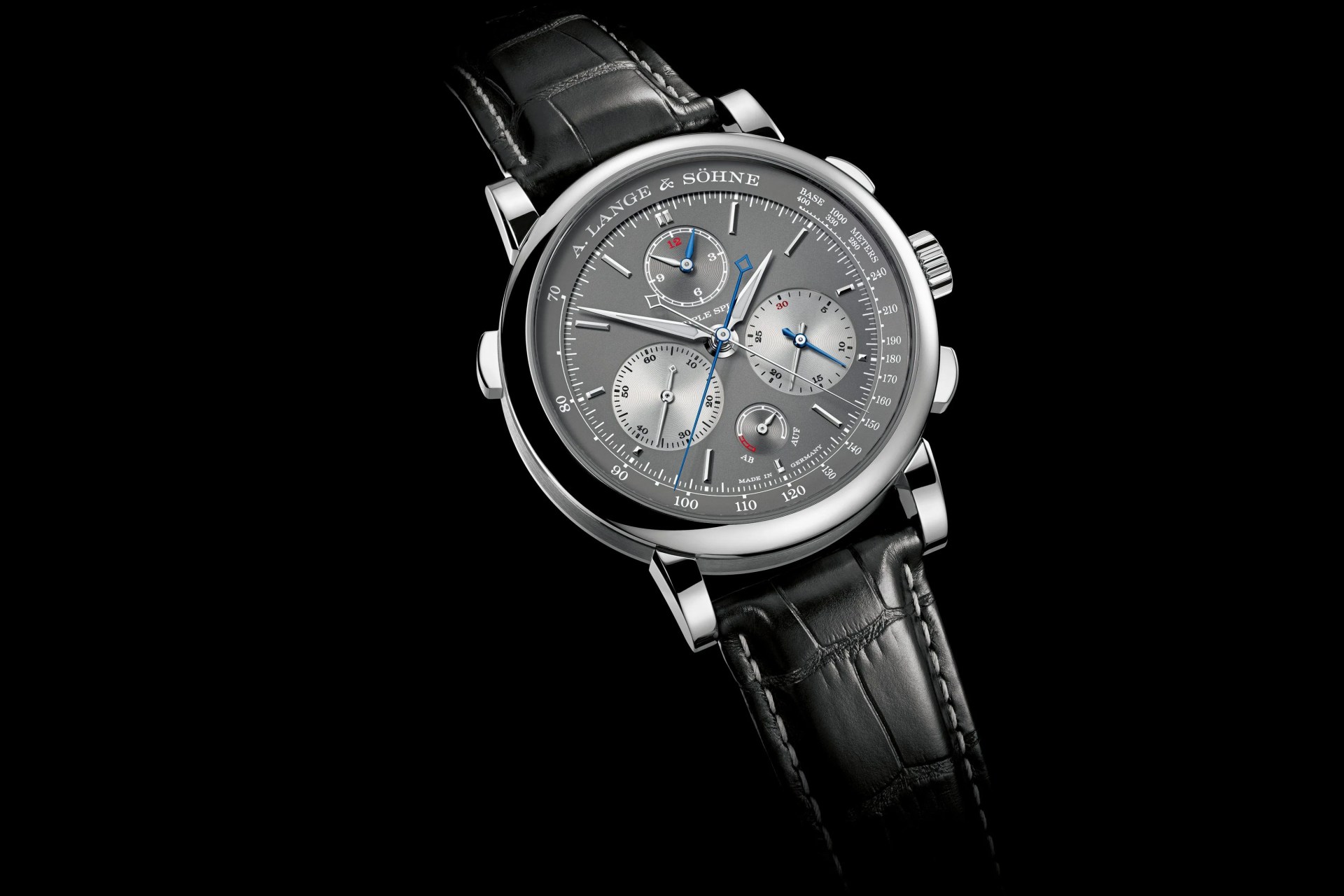 A. Lange & Sohne
A. Lange & SohneAt the end of World War II, Walter Lange returned from conscription in the German army to a family watch factory that had been blown to smithereens. Gone was everything that had come before: Walter’s great-grandfather, Ferdinand A. Lange, had begun making watches in 1845, and, with the help of his two sons, A. Lange & Söhne had become one of the foremost watchmakers in Germany’s Saxonia region.
In 1948, Walter abandoned what was left of his family’s business when he fled the Soviet occupation of East Germany. It was only after the fall of the Berlin Wall that Lange was able to return his family business to the forefront of high watchmaking. Since 1990, the brand has become the most respected watchmaker in Germany, beloved of aficionados and considered a benchmark of quality. Losing everything and fighting to regain it might have something to do with what A. Lange & Söhne is today: a company that does what few else in horology can or will do.







